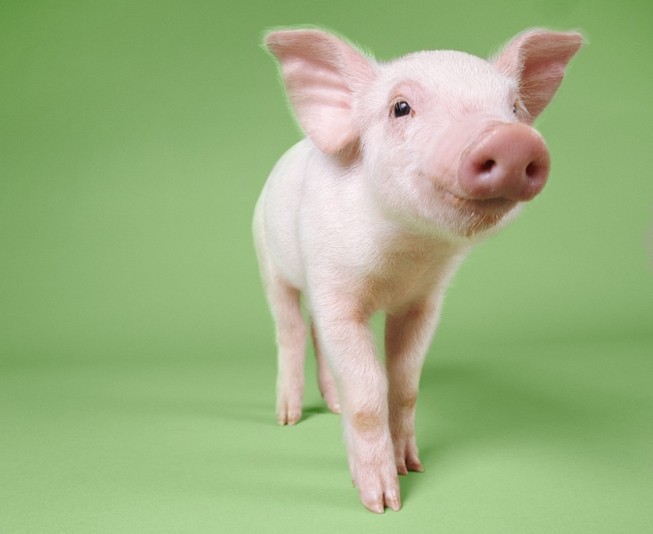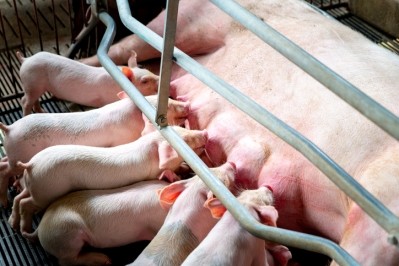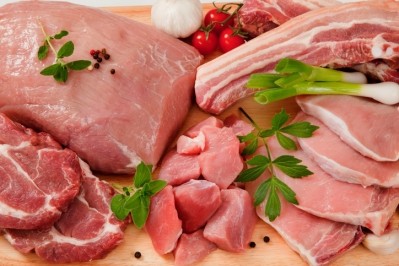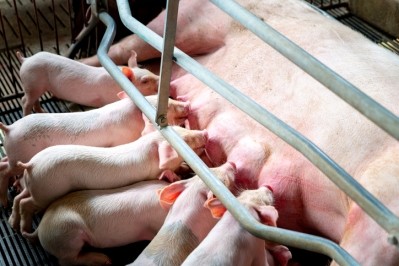Composition and form of piglet feed before and after weaning may influence performance

Dr Dominiek Maes, head of the porcine health management unit, Faculty of Veterinary Medicine, Ghent University, Belgium, was presenting during Trouw Nutrition’s LifeStart Swine Online Conference, held earlier this month.
Evidently, factors such as birthweight, piglet vitality, colostrum and milk production by the sows are imperative for further health and performance, and they may have long lasting effects, he said.
The stress caused by weaning is unavoidable, he said. “Piglets have to cope with the loss of lactogenic immunity which predisposes them to more infections.”
But there are also a lot of different non-infectious factors that should be enhanced in order to avoid losses and to maintain optimal performance of piglets post weaning, said Dr Maes.
Pre-weaning nutrition
Looking at management practices preweaning, particularly in the case where the number of piglets exceeds the number of teats on the sow due to today’s large litter sizes, he outlined how some farms practice split suckling or cross fostering to ensure homogeneity and maintain piglet vitality.
In terms of feed approaches pre-weaning, it is important to provide sufficient creep feed.
“The recommendation now is to start with creep feed early, during the first week of a piglet’s life,” he stressed.
Many studies have shown that creep feed is important to help support the maturation of the gut microbiome even if piglets tend to have a low intake, said the swine expert.
The composition of creep feed is key and can also help piglets adapt to weaning diets, he added.
A study from van Hees, 2019, noted Dr Maes, showed that adding dietary fibers to the supplemental diet of suckling piglets altered large intestinal morphology but not small intestinal permeability. Moreover, the paper demonstrated that dietary fiber showed effects on fermentation and modest changes of microbial populations in the hindgut.
“Also, that study indicated that the type of fiber supplement is important.”
Other studies have focused on the form of the feed pre-weaning, how it is presented to the piglets. A paper by Craig et al, 2021, showed that pellet size may be influential as regards creep feed intake, he said.
In that study, piglets that received pellets of 9-12mm in size had better post weaning performance than piglets fed smaller sized pellets.
Those authors concluded: “Providing large creep pellets in lactation increases creep feed disappearance. Larger pellets enhance postweaning feed intake, growth, and health status.”
The housing environment
Of course, optimal housing conditions and the climate – ambient temperature – pre-weaning are very important as well. Given their energy reserves, piglets shouldn’t be too cold, said the professor.
Loose housing systems for lactating sows have advantages but there are negatives from relying on these models as well, he continued.
Sows have more space and are better able to express maternal behavior. Using this model might also enable a better transition from the gestation stage for the mother, where, in the EU, loose housing systems are standard.
However, there could be a higher risk of lactation oestrus and more research is needed on fertility post-weaning when sows are housed this way.
For the piglets, these type of systems mean more space, and such models can encourage explorative behavior, and enable better transition after weaning, but there is an increased risk of piglet mortality from crushing by sows, and other critical issues to consider, he said.
Post-weaning diets
Looking at nutrition after weaning, Dr Maes noted that there is a decreased integrity of the intestinal epithelium of piglets, the villi height is reduced, also there are, in general, shorter microvilli and an increase in crypts.
Even under the best weaning conditions these developments occur and they show the impact of stress on the animals, he added.
“A sufficient intake of feed in piglets after weaning is essential to alleviate or combat the atrophy that we see in intestinal villi.”
The feed intake of the piglets during the first four days post weaning is very low – 100 to 200 grams per day; there is large variation, of course, between pens and between animals, said the Ghent University based specialist.
Some piglets will eat immediately after weaning, or at least a few hours afterwards, while others wait until one or two days have passed. But, in general, said Dr Maes, there is insufficient intake of energy by the animals for maintenance in this initial period.
In terms of feed composition at this stage, it is critical to provide good digestible proteins, carbohydrates, and essential amino acids, he said. The buffer capacity of feed should be kept low, so proteins and mineral inclusion levels should be limited. Damaging substances such as lectins in soybeans should be avoided and there also needs to be sufficient supplementation of the feed with vitamins and selenium to promote antioxidant activity. E. coli linked infections in post-weaning can engender free radicals, which may cause tissue damage, reported the professor.
Essentially fatty acids form precursors for immune responses, he continued. “Studies have shown that omega-3 fatty acids in a weaning may be associated with fewer E. coli linked infections and better feed intake.”
Spray dried plasma can be beneficial for piglet health, he said.
“Organic acids are often used mainly to combat E. coli and other [bacterial] infections. Pre-and probiotics may also be beneficial for good intestinal health and the microbiome of the recently weaned piglet.”
Beyond composition, he said the type of feed is key. If in pellet form, piglets prefer softer pellets, with feed intake improved using those.
“Liquid feed has a lot of advantages for recently weaned piglets. The dry matter level is similar to that of sow milk, the composition meets the requirements for nutrients and water and, so, the piglet does not have to discriminate between hunger and thirst, which, at that stage of production, can be an important advantage.”
A sufficient number of feeding places, with easy access, is also a factor in ensuring better piglet feed intake but such essential requirements are not often met on pig farms, he remarked. The same applies to drinking water where again easy access, the number of drinking nipples and water flow play a critical role.








